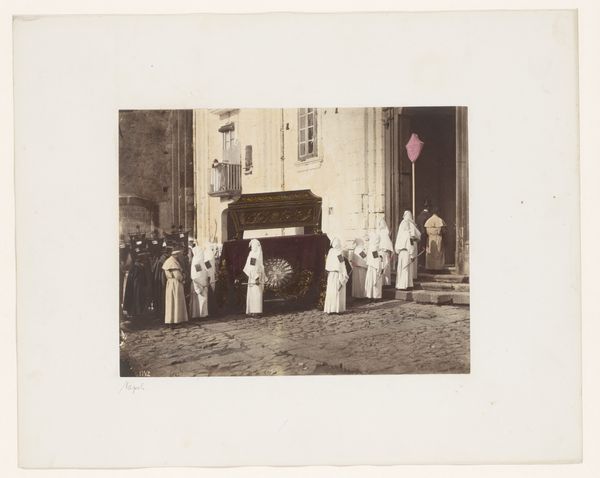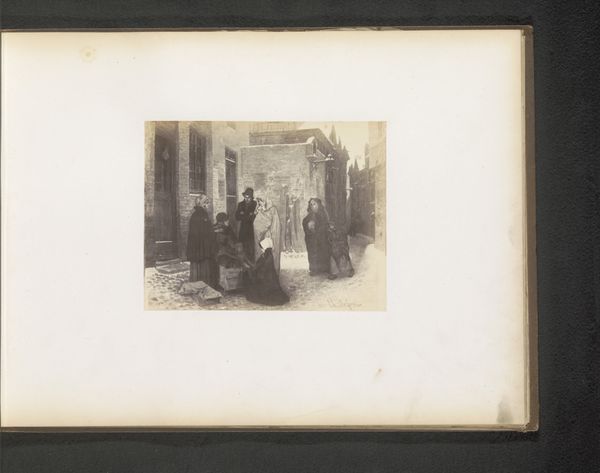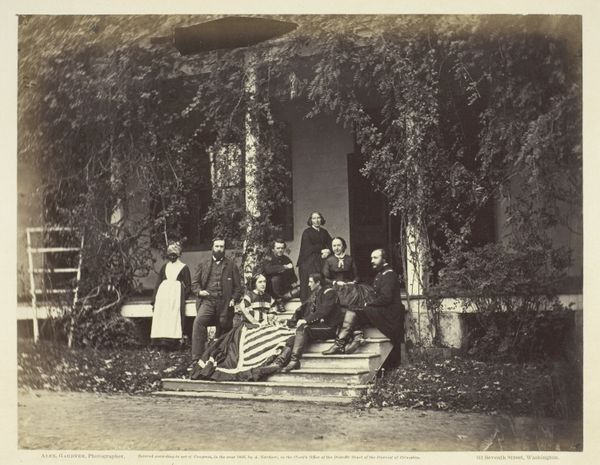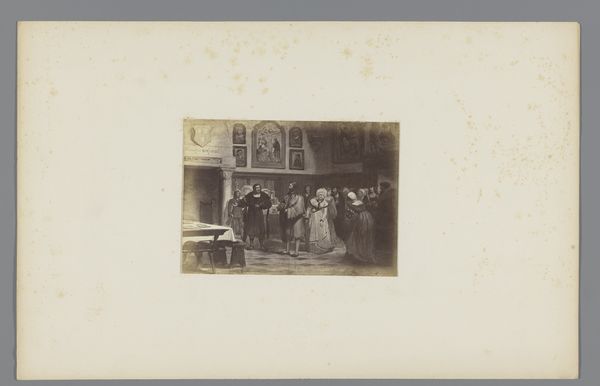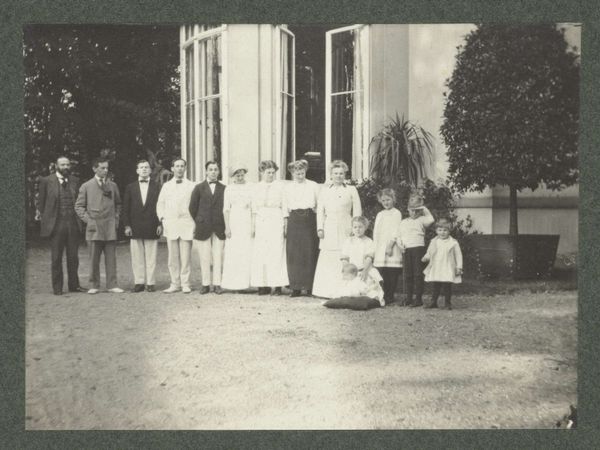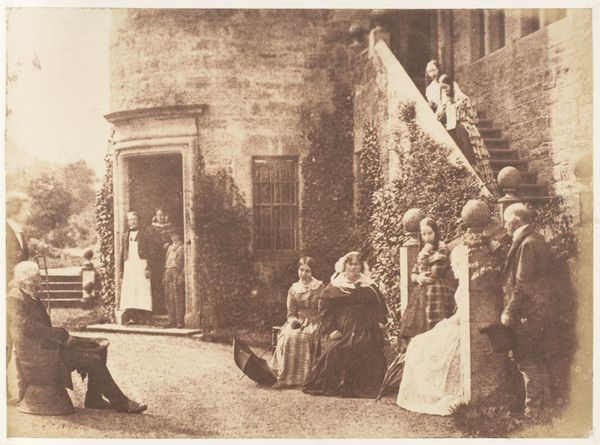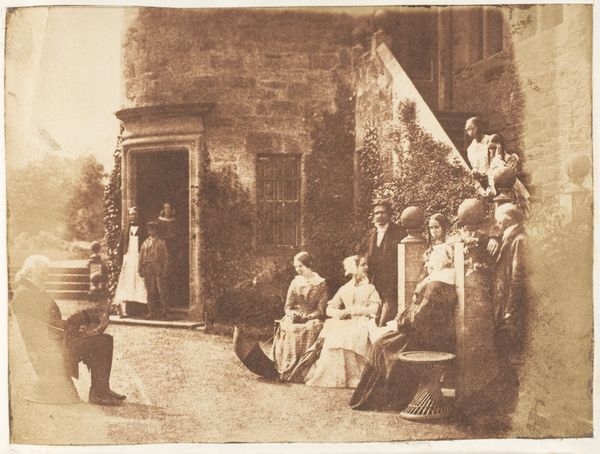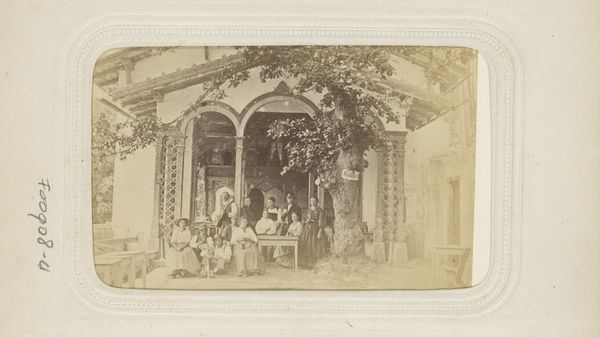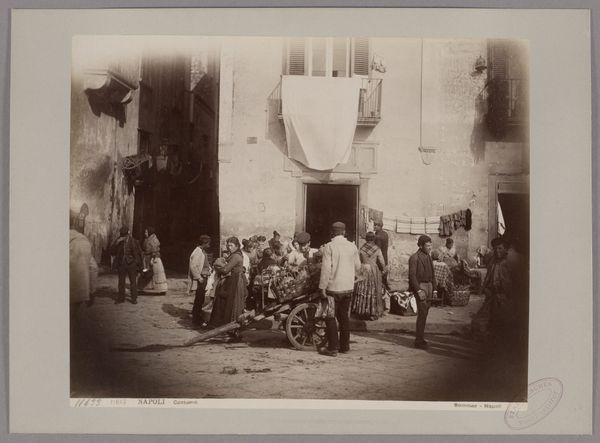
Naples_ Funerary Procession of the Congregazione de San Francesco c. 1868
0:00
0:00
Copyright: Public Domain
This photograph, taken in Naples by Giorgio Sommer, captures a funerary procession, a scene laden with symbols of death and the afterlife. Dominating the view, hooded figures evoke both solemn religious devotion and, perhaps unsettlingly, the specter of anonymity and hidden identity. Note the radiant sunburst emblazoned on the coffin's drapery. This ancient solar motif, typically symbolizing life, renewal, and divine illumination, takes on a poignant dimension in this context. We see this symbolism in the Egyptian sun god Ra, and later in Christian iconography to represent Christ. Here, the sunburst suggests a transition from earthly darkness to eternal light. The image resonates deeply with the human psyche, touching upon primal fears and hopes surrounding death. It is the cyclical journey of symbols through history and culture, constantly adapting and revealing new layers of meaning, that captures our collective memory and imagination.
Comments
stadelmuseum about 2 years ago
⋮
Naples held great appeal for tourists not only because of its charming coastal scenery and awe-inspiring Mount Vesuvius, but also thanks to its customs and traditions. Particularly from the 1880s onwards, Italian-based photographers increasingly marketed studies of human beings that shaped and continually fuelled the cliché of the poor but carefree population of Southern Italy. With his outsider’s perspective on the Italian culture, the native Frankfurter Giorgio Sommer contributed to shaping the visual habits of tourists. In one of his series he captured street scenes and ceremonies such as the funerary procession of the Congregazione di San Francesco. At the time this shot was taken, photographic technique was not capable of capturing movement. To make certain details appear less hazy, especially the faces of those accompanying the procession, Sommer touched up the negative in several places by hand.
Join the conversation
Join millions of artists and users on Artera today and experience the ultimate creative platform.

